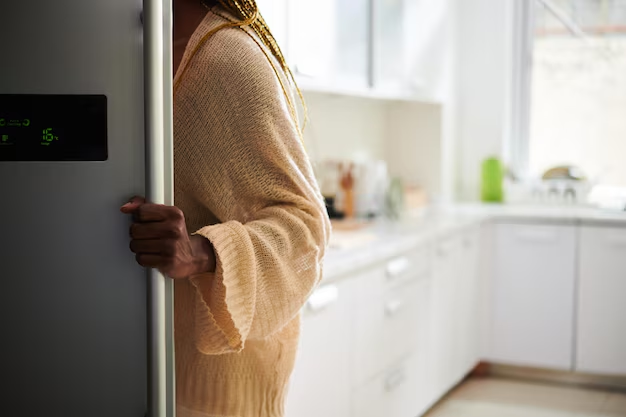Finding the Perfect Chill: What Is the Optimal Refrigerator Temperature?
When you open your refrigerator, you expect your food to be fresh, crisp, and safe to enjoy. Yet, achieving this balance hinges significantly on one critical factor: the temperature. So, what is the optimal refrigerator temperature that will keep your food in prime condition? Let’s journey into the cool world of refrigeration, exploring the right settings, factors to consider, and tips for maintaining the ideal cooling environment.
🧊 Understanding Refrigerator Temperature Basics
Why Temperature Matters
Refrigerators are not just about cold storage; they’re about food safety and quality. Keeping your refrigerator within the safe temperature zone is crucial for slowing the growth of bacteria that cause foodborne illnesses. When temperatures drift out of this range, food can spoil faster, affecting both flavor and texture.
The Recommended Temperature Range
Experts generally agree that the ideal refrigerator temperature is between 35°F and 38°F (1.6°C and 3.3°C). This range ensures food safety, keeping perishable items cold enough to inhibit bacterial growth but not so cold as to freeze and spoil delicate produce or dairy.
🥶 Ideal Freezer Settings
While the refrigerator is designed for short-term food storage, freezers are for longer-term preservation. The appropriate setting for your freezer is 0°F (-18°C). At this point, microbial growth is effectively halted, maintaining food quality for extended periods.
🍏 Tailoring Temperatures for Different Refrigerator Zones
Fridge Compartments Explained
Modern refrigerators often feature several compartments, each optimized for specific types of food. Understanding these zones can help in arranging your groceries for maximum freshness.
- Crisper Drawers: Typically found at the bottom, crisper drawers are perfect for storing fruits and vegetables. Use the humidity settings (high for vegetables, low for fruits) to prolong their shelf life.
- Door Shelves: These experience the most temperature fluctuations. Store condiments and juices here, avoiding perishable items like milk and eggs.
- Upper Shelves: Consistent but slightly warmer, great for ready-to-eat foods and drinks.
- Back of the Fridge: This is the coldest area, suitable for storing meats and dairy.
Adjusting for Climate and Usage
It’s important to consider environmental factors, like ambient room temperature or fridge usage frequency. During hot summer months or with frequent openings, adjust the thermostat slightly lower to maintain the ideal internal temperature.
🔎 Monitoring and Adjusting Your Fridge
Importance of Thermometers
While most refrigerators come with built-in thermostats, these can sometimes be unreliable. Investing in an inexpensive fridge thermometer can provide an accurate reading of your fridge’s internal climate, ensuring it stays within the recommended range.
Smart Technology in Refrigerators
Many modern refrigerators are equipped with smart technology. Features include temperature monitoring and alerts, energy-efficient cooling, and even mobile connectivity for remote adjustments. Explore these options if upgrading your appliances.
🚫 Avoiding Temperature Fluctuations
Best Practices for Use
- Don’t Overfill: Allowing space between items enables the air to circulate properly.
- Keep It Closed: Minimize the time the fridge door is open to maintain temperature integrity.
- Regular Maintenance: Clean coils and inspect door seals to ensure efficiency.
Signs of a Temperature Problem
- Frost Buildup: Indicates too cold temperatures.
- Spoiling Food Quickly: A sign your fridge may be too warm.
🛠️ Troubleshooting Temperature Issues
Common Problems and Solutions
- Inconsistent Cooling: Check door seals, clean coils, or adjust the thermostat.
- Noisy Fridge: This may point to compressor issues; consult a technician.
- Warm Spots: Rearrange your items for better airflow and check settings.
When to Call a Professional
If troubleshooting doesn’t resolve the issue or significant variances persist, it’s wise to seek professional help. Persistent temperature issues can lead to increased energy costs and food waste, so timely intervention is key.
🌿 Sustainable Refrigeration Practices
Energy Efficiency Tips
An energy-efficient fridge isn’t just good for the environment; it can also save you money. Choose Energy Star appliances, defrost the freezer regularly, and position your fridge away from heat sources like ovens or direct sunlight to ensure peak performance.
Eco-Friendly Alternatives
Consider fridges with eco-friendly refrigerants. Newer models often use substances with lower global warming potential (GWP), contributing to reduced environmental impact.
🌟 Quick Tips for Optimal Refrigerator Use
Here are some practical takeaways for maintaining your fridge:
- 🧊 Keep It Clean: Regular cleaning helps prevent mold and odor.
- 📏 Measure Temperature Regularly: Use a thermometer for accuracy.
- 🥂 Keep Shelves Organized: Helps with air circulation and efficiency.
- 📅 Label and Rotate Food: Avoids waste by using older items first.
- 🌡️ Adjust for Seasonal Changes: Compensate for temperature fluctuations in your home environment.
By understanding and implementing the best practices for refrigerator temperatures, you not only ensure your food stays fresh and safe but also enhance your appliance's efficiency, contributing to reduced energy consumption and sustainable living. Remember, maintaining the perfect chill is all about balance—keeping your food fresh, your environment sustainable, and your kitchen running smoothly. Refrigerate smartly, and enjoy every meal with peace of mind.
